HR talks culture. The executive table talks cash flow.
That's the problem in one sentence.
Here's what's maddening about this: HR controls the single largest budget in most companies - often bigger than all other operating costs combined. You're essentially the CFO of the biggest spend in the entire organization.
Yet you have the least financial authority. You're not in the room when budget gets allocated. You're not at the table when strategic decisions get made. Instead, you're stuck managing compliance, running recruiting cycles, and rolling out engagement surveys that nobody reads.
The irony is brutal.
Both sides are to blame here. Executives dismiss HR as "soft" - the department that talks about feelings while the grown-ups talk about margin. But HR shows up without numbers, speaking a language the business doesn't understand.
You bring narratives about employee experience when the CFO needs ROI projections. You propose culture initiatives when the CEO needs unit economics.
So you both lose. And the company loses money it could otherwise reinvest..
Here's why this matters right now - not in some theoretical future, but in the next two quarters. The business is accelerating. AI is repricing skills overnight. A developer who learns to 10x their output with AI tools is suddenly worth 56% more in the market.
Your compensation bands? Still based on 2023 data. Margins are tight. Salary budgets are flat. Investors want proof that workforce investments create value.
Inefficiency used to be tolerated. Now it's punished. Companies that can't connect people-decisions to profit will fall behind their competitors. Not in years. In quarters.
So here's the uncomfortable truth: if you cannot quantify how people decisions affect the bottom line, you don't deserve a seat at that table. But the inverse is also true. You can earn it fast.
This piece shows you how.
Executives trade in unit economics, margin expansion, cash conversion, and ROI. HR brings engagement surveys and culture narratives.
There's no translation layer.
When the CFO asks "what's the return on this learning program," you talk about employee satisfaction scores. When the CEO wants to know why productivity is flat, you mention psychological safety and belonging. These things matter - but you're answering different questions than the ones being asked.
The language barrier creates a dual gap that locks HR out of strategic conversations:
The skills gap. Most HR leaders aren't fluent in P&L basics. You can't size financial impact. You can't forecast return. When you propose an initiative, you talk about "improving employee experience" instead of "increasing revenue per employee by 8%." The CFO tunes out before you finish the sentence.
The tools gap. Even if you wanted to speak finance, your systems betray you. Your HRIS tracks headcount and comp bands. It doesn't track per-employee contribution. It doesn't show manager ROI. You're flying blind, trying to have a financial conversation with engagement data.
These two gaps compound into a credibility gap. Because HR can't connect initiatives to dollars, executives dismiss your proposals. You get underfunded, under-resourced, and pushed into compliance work and recruiting cycles instead of strategy.
Here's what this credibility gap actually costs:
Misallocated comp spend inside the biggest controllable budget. You're giving 3% raises to everyone when your top 20% deserve 15% and your bottom 20% deserve zero or negative.
Weak managers hide in averages. Nobody sees the damage because you report team metrics, not manager impact. That terrible director destroying morale? Invisible in your dashboards.
Blanket pay decisions that reward tenure over contribution. Twenty years of mediocrity gets paid more than two years of excellence.
High performers leave because reward feels arbitrary and political. They can't see the connection between their output and their comp, so they find companies that can.
You know that manager on the product team who's losing every top performer? Their team's output is half what it should be. You can feel the dysfunction. You hear about it in exit interviews.
But can you quantify the cost? Can you walk into the executive meeting and say "this manager is costing us $400K annually in lost productivity and replacement costs"?
No?
Then you're not speaking their language.
And here's the thing: this isn't just an HR problem. It's a business risk. Because labor isn't just your biggest expense. It's your biggest controllable expense.
And right now, it's completely unmanaged.

Let's start with data that should terrify every executive:
Labor represents 40-70% of operating expenses in knowledge work. Wages and salaries alone are roughly 70% of total employer costs. Yet most companies manage this spend with less rigor than they manage office supplies.
Read that again.
You track every software license. You negotiate hard on office leases. You scrutinize travel expenses. But the budget line that's 10x larger than all of those combined? Managed with annual review cycles and salary bands from three years ago.
HR, you're the unwitting CFO of the workforce. You administer the largest budget in the company. But "administering" isn't "optimizing." You process payroll. You manage benefits enrollment. You don't optimize unit economics or track contribution per dollar spent.
Here's where value hemorrhages in knowledge work:
Mispriced roles. You pay for time and tenure, not output. That senior engineer coasting at 40% capacity? They're compensated like they're delivering at 100%. Multiply that across a team of 50, and you're burning millions of dollars annually on productivity you're not getting.
Underperformers drain everything. Gallup research shows actively disengaged employees cost 34% of their salary in lost productivity. For a $70K employee, that's $23,800 per year. But it gets worse - managers spend up to 17% of their time managing underperformers. That's hidden labor cost you never track, never report, never fix.
The turnover tax. Replacing a knowledge worker can costs 0.5x to 2.0x of their salary depending on complexity. Executive replacements exceed 200% of salary. Yet most HR teams can't tell you the fully loaded cost by department, by manager, by quarter. You know people are leaving. You don't know what it's actually costing.
And here's where executives need to own their part: CEOs and CFOs, you're ignoring your biggest lever. You obsess over 3% cost reductions in operations while tolerating 20-30% waste in workforce productivity.
You'll spend three months negotiating a vendor contract worth $200K, then approve a bad hire that will cost you $400K without blinking.
If you can't see contribution by team and by person, you're flying blind on the expense that matters most.
The competitive risk? Your competitors who do manage labor as a P&L asset are gaining margin, moving faster, and pricing you out of talent markets. While you're stuck in annual review cycles, they're reallocating resources in real time based on contribution data. They're not smarter. They just have better instruments.
And here's why this matters right now - not in some theoretical future, but in the next two quarters.

2025 salary budgets are converging around 3–4% increases. With margins squeezed and economic uncertainty building, every dollar in compensation must deliver measurable impact — there’s less room for error now than ever.
The margin for error just disappeared.
Gen-AI adoption nearly doubled to 65% by mid-2024. That's not a trend - it's a reset. And it's creating wage premiums you're not prepared for.
AI skills now carry a 56% wage premium in the market. Let that sink in. A developer who masters AI-assisted coding is suddenly worth half again as much as one who doesn't. Your compensation philosophy? Still built around years of experience and job titles.
Companies that align skills, incentives, and work design are capturing massive productivity gains. Those that don't? They're overpaying for outdated skills while underpaying for the skills that actually matter. You're losing your best people to companies that price talent based on output, not tenure.
By the time you do your annual compensation review, the talent market has already moved. High performers are getting offers based on AI-amplified output. You're still using salary bands from 2023.
Think about that timing gap. Your competitor made an offer last month based on current market rates and proven productivity multipliers. You'll "address it" in your next review cycle - six months from now. That person is already gone.
Disclosure pressure is rising. Investors want standardized human capital metrics. The SEC's 2025 agenda signals new rules ahead. Soon, the market will compare you on workforce value creation the same way it compares you on revenue growth and margin.
Can you show revenue per employee trends? Human capital ROI? Time-to-productivity improvements?
Or are you still reporting headcount and diversity percentages?
Here's the bottom line: Business velocity is compounding. AI is widening the gap between efficient and inefficient teams. Margins are tight. Investors are watching. Your competitors are moving.
You don't get years to build financial credibility. You get quarters. Maybe two.
So what does earning a seat actually look like? It means showing up with the same financial rigor that Finance brings. It means translating every HR initiative into margin impact, risk reduction, or revenue acceleration.
No more "this will improve engagement." Instead: "This will increase revenue per employee by 8%, which translates to $1.6M annually."

The frameworks below blend conceptual metrics (Revenue Per Employee, Human Capital ROI) with tactical tools (manager accountability maps, employee P&Ls). Use the metrics to diagnose problems. Use the tools to fix them.
Together, they give you Finance-grade visibility into your biggest budget.
What it is: A live dashboard that ranks managers by their impact on productivity, engagement, and retention. Not annual reviews - real-time signals that show which managers create value and which destroy it.
Why it matters: Managers drive roughly 70% of variance in team engagement. In knowledge work, that shows up as throughput differences and churn risk. Yet most companies treat manager quality like a mystery - something you feel but can't measure.
Wrong. You can measure it.
Signals to track:
Team engagement index with trend. Pulse surveys, not annual. You need to see when engagement drops, not six months after everyone quit.
Throughput per FTE or per payroll dollar. Output divided by cost. Revenue-generating teams use revenue. Non-revenue teams use agreed proxies: features shipped, incidents resolved, cycle time reduced.
Quality metrics. Rework rate, internal NPS, customer satisfaction by team. High output means nothing if it's garbage that needs to be redone.
Voluntary turnover and regretted loss. Calculate replacement cost by team using 80-200% of salary multiples. When a manager loses three high performers in six months, that's not bad luck - that's a $300K problem.
But here's what most companies get wrong - they try to force manager quality into a spreadsheet. Engagement scores, throughput metrics, turnover rates. These signals matter, but they're just inputs to the real question: who do people actually want to work with?
The INFIN's market system captures both. The explicit metrics (engagement, throughput, quality, retention) provide the foundation. But the market reveals the intangibles no dashboard can measure - does this manager unblock people or create bottlenecks? Do other teams seek their input or avoid them? Do people volunteer for their projects or get assigned?
These behaviors create market signals that aggregate into a live view of manager value. Traditional systems force you to weight metrics manually, then defend your formula in every calibration meeting. The INFIN shows you what the organization already knows.
How to use it:
The financial translation:
"We have three managers whose teams underperform by 25% on throughput per dollar. That's $600K in annual waste. Here's the replacement plan."
That's the language that earns budget and respect.
What it is: A simple, consistent view showing whether each employee (or role) is profitable at their current compensation level.
Why most HR teams don't have this: Because it requires agreeing on contribution proxies with Finance. That's uncomfortable. But it's also the only way to speak the executive language.
Stop avoiding the conversation. The INFIN makes it easier. Of the total compensation being paid out by the company, what is this person's actual share? What should it be based on their market value inside your organization - as judged by everyone they work with?
The difference tells you everything. If someone's taking more than they're giving, that's a loss to the company. If they're creating more value than they're capturing, that's where you invest.
How it works:
Cost side:
Contribution side (calculated with The INFIN's market system):
The INFIN aggregates contribution signals across the organization to show actual value creation.
Revenue roles: Attributed revenue, pipeline value, gross margin share
Non-revenue roles: Market-weighted contribution based on:
Calculate: Contribution minus Cost
How The INFIN protects against gaming:
The market system naturally filters manipulation. Role-specific signals are weighted by credibility and cross-validated across multiple perspectives. The system tracks trends, not snapshots - so one quarter in the red doesn't doom someone
if there's valid context. Managers can add annotations, but the underlying data comes from aggregated organizational signals, not individual opinions.
The financial translation:
"We have 12 employees in red. That's $840K in negative contribution annually. Here's the performance improvement plan - and if they don't improve in 90 days, here's the exit plan."
Suddenly, "managing underperformers" isn't soft. It's margin recovery.

What it is: A bonus pool that moves with value creation, not entitlement. No more "everyone gets 3%" or "we'll figure it out in December."
Why it matters now: Flat salary budgets force smarter variable pay. If you can't give big base raises, bonuses become your performance lever - but only if they're tied to contribution.
The INFIN gives you the data you need. The market system tracks who contributes what, in real time, even when contributors change throughout a project. An engineer kicks off a deal, a PM carries it through, a sales engineer closes it - The INFIN shows each person's contribution along the way.
No more arguing about who deserves credit. The system tracks it as it happens.
How to use The INFIN's data for bonus allocation:
Step 1: Define 2-3 company value drivers Examples: gross margin, net revenue retention, cycle time to deployment, customer acquisition cost
Step 2: Create a team score Weight company drivers (40%) + team-specific outputs (30%). Be specific - "shipped features that drove revenue" not "worked hard."
Step 3: Create an individual score Use employee P&L data from The INFIN (30%). Did their contribution/cost ratio improve?
Step 4: Allocate the pool with a formula Example: 40% company performance × 30% team score × 30% individual score
Why it works:
Clear, defensible rules protect equity while rewarding contribution. Variable pay scales with business performance, reducing fixed cost risk. High performers see direct correlation between output and reward.
No more mystery. No more politics.
The financial translation:
"Last year we spent $2M on bonuses with zero link to performance. This year, bonuses track directly to margin expansion and revenue per employee improvement. Here's the ROI."
What it is: A quarterly review process that moves dollars from low-yield roles to high-yield roles before the market forces it.
Why most companies do this badly: They wait for a revenue crisis, then do panicked layoffs. That destroys morale and often cuts muscle, not fat.
Do it proactively instead.
Signals to monitor:
Unit labor cost trends: Track labor cost per unit of output. When it rises without corresponding revenue increase, you have an efficiency problem that's about to become a margin problem.
AI leverage signals: Who's compounding their output with AI tools? Who's stuck in legacy workflows? The gap between these two groups is widening fast - and it should be reflected in resource allocation.
Churn risk & replacement cost: Use your manager accountability map to identify teams with high regretted loss. Calculate the cost. Reallocate budget to retention or replacement before people leave.
Quarterly action plan:
Trim or redeploy: Low-yield roles with negative employee P&Ls
Reinvest: High-yield roles or new skills with clear ROI (especially AI-amplified roles)
Upskill: Where wage premiums are rising (e.g., AI skills with 56% premium)
The financial translation:
"We're reallocating $1.2M from stagnant back-office roles into revenue-generating positions and AI upskilling. Projected ROI is 3:1 within 12 months."

You can have the best frameworks in the world. If Finance doesn't buy in, you're dead in the water.
You can't track employee P&L if Finance doesn't agree on contribution proxies. This is the conversation most HR leaders avoid because it's uncomfortable. Finance will push back. They'll say "you can't measure that" or "those metrics are too subjective."
Push through it anyway.
Schedule the meeting. Get alignment. Document the formulas. Make Finance co-own the definitions so they can't dismiss the results later. This isn't an HR initiative - it's a joint effort to optimize the company's largest expense.
Monthly: Employee P&Ls to managers (with context notes)
This keeps performance conversations current, not archaeological. Managers need real-time data to make real-time decisions.
Quarterly: Manager accountability map + workforce reallocation pack to exec team
This is your board deck. Show the numbers. Show the trends. Show the action plan.
Annually: Bonus formula review with Finance to refine drivers
Business priorities shift. Your performance metrics should shift with them.
The cadence matters because consistency builds credibility. Miss one cycle and you're back to being "HR with another initiative."
Every HR conversation must start with "impact on margin, growth, or risk."
Not "this will improve engagement." Instead: "This will improve revenue per employee by 8%, which translates to $1.6M annually."
Not "people are burnt out." Instead: "High performers are leaving at 2x the rate of average performers. That's $900K in replacement costs we can avoid."
Culture remains important - it's the means. Financial performance is the score. Learn to lead with the score.
Don't try to implement all four tools at once. That's how good ideas die in pilot hell.
Pick one - probably the manager accountability map because the data is easiest to gather. Run it for two quarters. Show the exec team the findings in dollars. Watch them lean forward.
Then expand.
Credibility isn't built in presentations. It's built in results.

Every time you propose financial rigor in HR, someone raises the same objections. Let's handle them.
It's not surveillance - it's accountability. Every other department tracks performance. Sales has quotas. Product has velocity. Finance has margin targets. Marketing tracks CAC and conversion rates.
HR shouldn't be exempt just because the work involves people. You're not tracking bathroom breaks - you're tracking contribution against the largest budget in the company.
Limit visibility of individual P&Ls to appropriate leaders: manager + HR + exec. Not the whole company. Provide rebuttal notes and calibration windows so people can add context. Audit quarterly for bias.
This isn't exposing people - it's creating transparency where decisions get made.
Of course they'll try. That's why you use multi-metric scoring with time trends, not single snapshots. Weight company and team results heavily (70%) to prevent sandbagging on individual metrics.
Gaming is actually proof the system matters. Nobody games things that don't affect outcomes.
Your culture isn't ready for irrelevance either. The market doesn't care if you're comfortable. Your competitors are already doing this - they just don't blog about it.
Pilot with two functions, show wins in dollars, then scale. Culture follows results, not the other way around.
Annual review cycles create fatigue too - and they deliver zero value. This creates clarity, which actually reduces stress for high performers. They finally see the connection between their work and their reward.
The people complaining about change fatigue are usually the ones benefiting from ambiguity.
If HR cannot speak in dollars, it should not expect a seat.
The fix isn't a rebrand or a better deck. It's a new operating model.
The path forward is clear: Run the workforce like a portfolio. Build a manager accountability map that exposes where value is created and destroyed. Create employee P&Ls that show contribution against cost. Allocate bonuses with a formula that tracks company value, team output, and individual results. Reallocate resources proactively so dollars chase return, not tradition.
Stop waiting for permission. The credibility gap exists because you haven't built the bridge. Start with one tool, prove ROI in dollars, then expand. The language of business is money - learn it, or accept marginalization.
You already control the biggest budget. Act like it.
You can keep treating HR as compliance overhead, or you can partner with the one function that can turn your largest expense into your strongest advantage. Labor is 40-70% of your spend. If you can't see contribution per dollar, you're leaving millions on the table.
Your competitor can. And they're using that visibility to move faster than you.
The market is moving. AI is repricing skills in real time. Investors want proof of workforce value. Margins are tight. Speed is up.
You don't get years to fix this. You get quarters.
The INFIN stance is simple: HR doesn't wait for a seat. It earns one with numbers that stand up in the executive room. Use these tools. Put them on a monthly and quarterly drumbeat. Watch credibility rise, waste fall, and margin improve.
The table has room.
But only for those who speak the language.